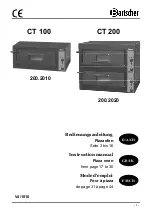
15
Just Add Water
For chopped or shredded vegetables, and for fruits to be used in cookies, no
reconstitution is usually needed. If the pieces are quiet crisp and dry you can
try sprinkling with 1 Tablespoon water per 1/2 cup of dried food.
For vegetables and fruits to be used in soufflés, pies, quick breads,
dough or batters, use 2 parts water to 3 parts (by volume) dried food.
For vegetables and fruits which will be cooked in the liquid, such as
vegetable side dishes, fruit toppings and compotes, use 1 to 1 1/2 parts wa-
ter to 1 part dried food. Extra liquid may be required for proper cooking.
Time for Reconstitution Hints
• Chopped and shredded foods reconstitute quickly. Generally, 15 to 30
minutes is sufficient.
• Larger vegetables or fruit slices and meat cubes can be reconstituted
overnight in water left in the refrigerator. If this is inconvenient, place
in boiling water, remove from stove and stand 2 to 3 hours.
• Whole pieces of fruit take longest to reconstitute and are best left to
soak overnight.
Other Reconstitution Hints
• If you drain reconstituted foods, save the liquid. This liquid has great
nutritional value. Freeze this liquid for later use in soups, leathers, pies
or compotes.
• There is no need to reconstitute ahead of time when making soups.
Dried vegetables can be added directly to the soup about one hour
before serving.
• Do not add spices, salt, bouillon cubes or tomato products until veg-
etables are reconstituted and cooked. These items considerably hinder
rehydration.
• Some foods take longer to reconstitute than other. Carrots and beans
require more time than green peas and potatoes. A rule of thumb: those
that take the longest to dehydrate will take the longest to reconstitute.
• Try not to use more liquid than necessary for reconstitution because
nutrients will be drained away with the excess water. Place dehydrated
food in a container and use just enough water to cover the food. Add
more water later as needed to replace what the food absorbs.












































